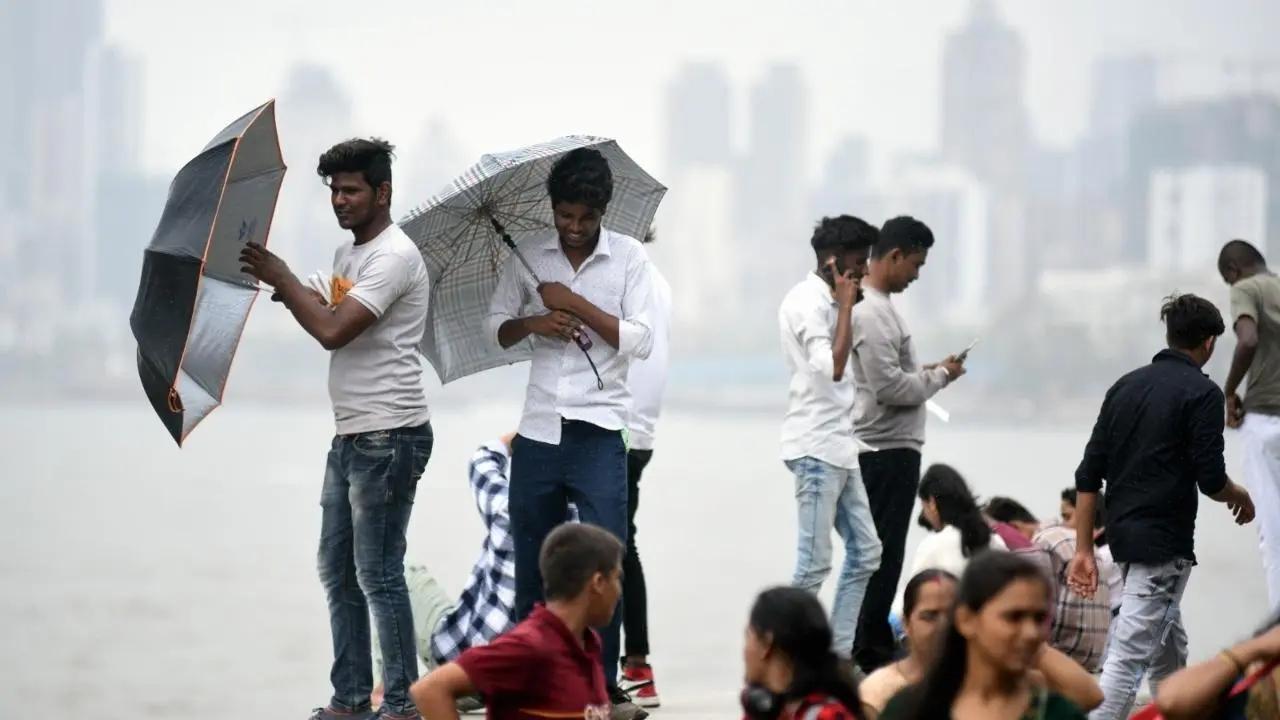Mumbai weather update: Generally cloudy sky with moderate rain or thundershowers

The India Meteorological Department has predicted moderate rainfall in Mumbai city and its suburbs on Tuesday. In its latest Mumbai weather update, Brihanmumbai Municipal Corporation said in a statement that the city will witness “generally cloudy sky with moderate rain or thundershowers”.
Rainfall data for the past 24 hours indicated that the city had received a significant amount of precipitation. The recorded figures stand at 8.19 mm in Mumbai City, 5.30 mm in the Eastern Suburbs, and 0.53 mm in the Western Suburbs.
A high tide of 3.95 will strike at 9:35 AM. Another high tide, slightly lower at 3.61 meters, is expected at 9:45 PM. A low tide is expected at 3:45 PM of 1.69 meters.
Meanwhile, after subdued rainfall resulted in India experiencing the driest August since 1901, the Southwest Monsoon is expected to revive over the weekend bringing rain to central and southern parts of the country, the India Meteorological Department (IMD) said on August 31.
Addressing a press conference virtually, India Meteorological Department Director General Mrutyunjay Mohapatra said September was likely to witness normal rainfall in the range of 91-109 per cent of the long period average of 167.9 mm.
However, Mohapatra said even if the rainfall in September was to remain on the higher side, the June-September seasonal rainfall average is expected to be below normal for the season.
Also read: Mumbai rains: Persistent scattered showers ahead
After excess rainfall in July, the south-west monsoon played truant for most of August which witnessed 20 break days from August 6-17, August 21-22 and August 26-31 on account of El Nino conditions in the equatorial Pacific Ocean and unfavourable Indian Ocean Dipole conditions.
He said development of El Nino conditions in the equatorial Pacific Ocean was the most important factor behind the deficient rainfall activity in August. However, the Indian Ocean Dipole the difference in sea surface temperature of Arabian Sea and the Bay of Bengal has started turning positive, which could counter the El Nino impact, Mohapatra said.
He said the Madden Julian Oscillation — the eastward moving pulse of cloud — and the rainfall in the tropical region too was turning favourable and plays a role in the revival of monsoon.
With a 36 per cent deficit, India recorded the driest August since 1901. August receives 254.9 mm of rainfall, accounting for around 30 per cent of the precipitation during the monsoon season. The actual rainfall recorded in August was 162.7 mm.
India recorded a rainfall deficit of 25 per cent in August 2005, 24.6 per cent in 1965; 24.4 per cent in 1920; 24.1 per cent in 2009 and 24 per cent deficit in 1913, according to the IMD data.
Mohapatra said above-normal maximum temperatures were likely to prevail over most parts of the country, except over some areas in south peninsular India and some pockets of west-central India, where normal to below-normal maximum temperatures are likely.
He said above-normal minimum temperatures were likely over most parts of the country, except for some areas in extreme north India, where normal to below-normal minimum temperatures are likely. (With inputs from PTI)

Atul Tiwari is a seasoned journalist at Mumbai Times, specializing in city news, culture, and human-interest stories. With a knack for uncovering compelling narratives, Atul brings Mumbai’s vibrant spirit to life through his writing.





